The vastness of space has always piqued the curiosity and imagination of humans. In recent years, scientists have made astounding discoveries in the field of exoplanet exploration. Exoplanets, also known as extrasolar planets, are planets that orbit stars outside of our solar system. The significance of studying exoplanets lies in the potential insights they offer into the existence of life beyond Earth. However, exploring these distant worlds poses numerous challenges, such as data limitations and atmospheric characterization complexities. Fortunately, the deployment of space telescopes has revolutionized the field of exoplanet exploration, providing us with invaluable data and enabling breakthrough discoveries. This article delves into the role played by space telescopes in unlocking the secrets of exoplanets, highlighting their capabilities and the future prospects they offer in the search for alien life.
Contents
- Understanding Exoplanets
- Challenges in Exoplanet Exploration
- How Space Telescopes Revolutionized Exoplanet Exploration
- Current and Future Space Telescopes
- Space Telescopes and the Search for Alien Life
- The Role of Data Analysis in Exoplanet Discoveries
- Conclusion
-
Frequently Asked Questions
- What are exoplanets?
- How are exoplanets detected?
- What is the significance of exoplanet exploration?
- What are the challenges in exoplanet exploration?
- How have space telescopes revolutionized exoplanet exploration?
- What is the Kepler Space Telescope?
- What is the transit photometry technique?
- What is the Hubble Space Telescope known for in exoplanet exploration?
- What is the James Webb Space Telescope?
- What is the role of data analysis in exoplanet discoveries?
- References
-
Frequently Asked Questions
- 1. How are exoplanets defined?
- 2. Why is the exploration of exoplanets significant?
- 3. What are the challenges in exoplanet exploration?
- 4. How have space telescopes revolutionized exoplanet exploration?
- 5. What is the transit photometry technique?
- 6. What is the role of the James Webb Space Telescope in exoplanet exploration?
- 7. What is the role of data analysis in exoplanet discoveries?
- 8. How does the TESS spacecraft contribute to exoplanet exploration?
- 9. What is the significance of biosignature detection in exoplanet exploration?
- 10. How do space telescopes contribute to the characterization of habitable zones?
- References
- Read More
Understanding Exoplanets
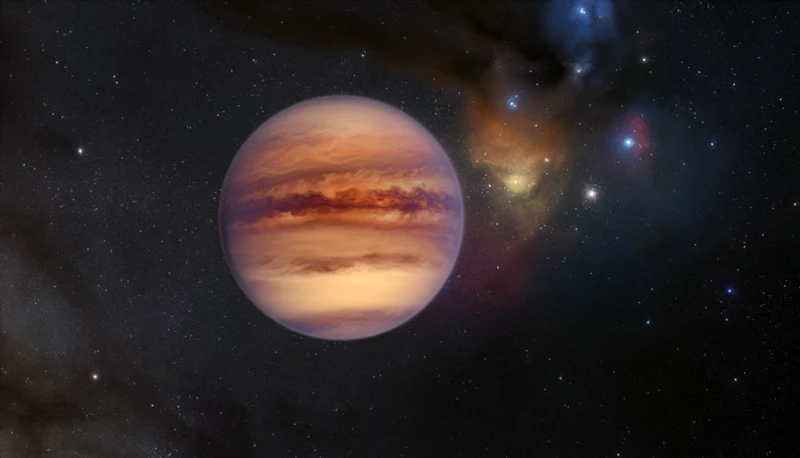
Exoplanets, also referred to as extrasolar planets, have captured the attention of scientists and astronomy enthusiasts alike. These celestial bodies orbit stars outside of our solar system, offering a glimpse into the diversity and vastness of the universe. Understanding exoplanets is crucial in our quest to unravel the mysteries of the cosmos, including the possibility of life on other worlds. Exoplanets are defined as planets that orbit a star other than our Sun, and they come in a wide range of sizes, compositions, and orbital characteristics. Exploring these distant worlds provides us with valuable insights into planetary formation, evolution, and the potential for habitability. The significance of exoplanet exploration lies in the fact that it challenges our understanding of the universe and our place within it. While our current knowledge of exoplanets is expanding rapidly, there is still much to be discovered. Advances in technology and the use of /planetary-alignments-occurrence-patterns/ space telescopes have greatly contributed to our ability to detect and study these distant planetary systems, opening up new frontiers in the field of astronomy.
Definition of Exoplanets
Exoplanets, also known as extrasolar planets, are defined as planets that orbit stars outside of our solar system. They are celestial bodies that exist beyond the boundaries of our own planetary system. These planets have captivated the attention of scientists and astronomers due to their potential to provide valuable insights into the nature of our universe. Exoplanets come in a wide variety of sizes, compositions, and orbital characteristics. They range from small, rocky planets similar to Earth, to gas giants many times the size of Jupiter. The discovery of exoplanets has challenged our previous understanding of planetary systems and has opened up new avenues of research in astronomy. By studying the properties of exoplanets, we can gain a deeper understanding of planetary formation, evolution, and the potential for habitability in other parts of the universe. Detecting exoplanets is no easy task, as they are far away from Earth and often difficult to observe directly. Scientists utilize various techniques, such as the /transit-photometry-technique/ transit photometry technique, to identify the presence of exoplanets by measuring the slight dip in the brightness of a star as a planet passes in front of it. This method has proved to be highly successful in the detection and confirmation of exoplanets. The first confirmed exoplanet discovery occurred in 1992, and since then, thousands of exoplanets have been identified, expanding our knowledge of the universe and igniting the search for potentially habitable worlds beyond our own.
Significance of Exoplanet Exploration
The exploration of exoplanets holds immense significance in the field of astronomy and our understanding of the universe. This quest to study planets beyond our solar system provides us with a wealth of information that expands our knowledge of planetary systems and their formation. The significance of exoplanet exploration can be summarized in the following points:
1. Planetary Diversity: By discovering and characterizing exoplanets, scientists gain insight into the vast diversity of planetary systems in the universe. These extrasolar planets come in various sizes, compositions, and orbital configurations, challenging previous notions of what constitutes a “typical” planet.
2. Habitability Factors: Understanding exoplanets helps us identify the conditions necessary for a planet to be habitable. This knowledge aids in the search for potential life beyond Earth and provides insights into the likelihood of finding environments suitable for sustaining life as we know it.
3. Studying Planetary Atmospheres: Analyzing the atmospheres of exoplanets can provide valuable clues about their composition, climate, and potential for supporting life. This information is crucial in our search for habitable worlds and determining if we are alone in the universe.
4. Planetary Formation and Evolution: By studying exoplanetary systems, scientists can gain a better understanding of how planets form and evolve over time. This knowledge helps refine our models of planetary formation, shedding light on the processes that shape the worlds we observe.
5. Unveiling the Earth’s Uniqueness: The exploration of exoplanets allows us to appreciate the unique characteristics of our own planet and its place in the cosmos. Comparing Earth to other known planets provides valuable insights into what makes our home planet special and how it fits into the grand tapestry of the universe.
The ongoing efforts to explore exoplanets have brought us significant breakthroughs and continue to push the boundaries of our knowledge. With each new discovery, we come closer to unraveling the mysteries of the cosmos and potentially finding other worlds that may harbor life. /retrograde-planets-astrology/ The significance of exoplanet exploration extends beyond astronomy, inspiring awe and wonder as we contemplate humanity’s place in the vastness of the universe.
Challenges in Exoplanet Exploration

The exploration of exoplanets comes with its fair share of challenges. It is important to acknowledge and address these obstacles to enhance our understanding of these distant worlds. One of the main challenges is data limitations. Collecting and analyzing data from exoplanets, which are located light-years away, can be a complex and time-consuming process. Scientists rely on indirect methods such as the transit photometry technique, which involves measuring the dip in a star’s brightness caused by a planet passing in front of it, or the radial velocity method, which detects the gravitational pull of a planet on its host star. Another significant challenge is the atmospheric characterization of exoplanets. Determining the composition and properties of exoplanet atmospheres is crucial in understanding their potential habitability and the presence of biomarkers. However, the thin atmospheric signatures are often difficult to detect and interpret accurately. Despite these challenges, advancements in technology and the use of space telescopes like the /the-ophiuchus-paradox-astrologers-embrace-13th-zodiac/ Kepler and Hubble have significantly contributed to our ability to overcome these obstacles and expand our knowledge of exoplanets.
Data Limitations
Data limitations are a significant challenge in the field of exoplanet exploration. Scientists rely on various methods to detect and study these distant worlds, but the data they receive is often limited in its scope and precision. One of the primary methods used to detect exoplanets is the transit method, which involves measuring the brightness of a star as a planet passes in front of it. However, this method only provides information about the size and orbital characteristics of the planet, and not much about its composition or atmosphere. Another method, known as the radial velocity method, detects exoplanets by observing the slight wobble in a star’s motion caused by the gravitational pull of an orbiting planet. While this method can provide some information about the mass and orbital period of the planet, it still does not reveal much about its physical properties. Additionally, the data collected from space telescopes is often limited by factors such as the duration of observations, instrument limitations, and the occurrence of observational artifacts. These data limitations hinder our ability to fully understand the nature and diversity of exoplanets. However, advancements in technology and the development of new space telescopes continue to improve our data collection capabilities, allowing scientists to gather more detailed and comprehensive information about these distant worlds.
Atmospheric Characterization Challenges
Characterizing the atmospheres of exoplanets is a complex task that presents several challenges. One of the significant challenges arises from the vast distances between exoplanets and Earth, making direct observation of exoplanet atmospheres extremely difficult. To overcome this, scientists employ various techniques. Transit spectroscopy, for instance, involves studying the slight dip in a star’s brightness as an exoplanet passes in front of it. This dip provides information about the exoplanet’s atmosphere by analyzing the wavelengths of light that are absorbed by its atmospheric components. However, the signal-to-noise ratio in transit spectroscopy is often low, making it challenging to extract precise data. Another challenge in atmospheric characterization is caused by the presence of clouds, hazes, and aerosols in exoplanet atmospheres. These atmospheric phenomena can obscure the detection of atmospheric components and hinder our understanding of the exoplanet’s composition and habitability. Additionally, the presence of stellar activity and noise from the host star can further complicate the analysis of exoplanet atmospheres. Despite these challenges, advances in technology and the development of sophisticated instruments have allowed scientists to make significant progress in the field. Future missions and improved observational techniques aim to overcome these challenges and provide more detailed insights into the atmospheres of exoplanets.
How Space Telescopes Revolutionized Exoplanet Exploration
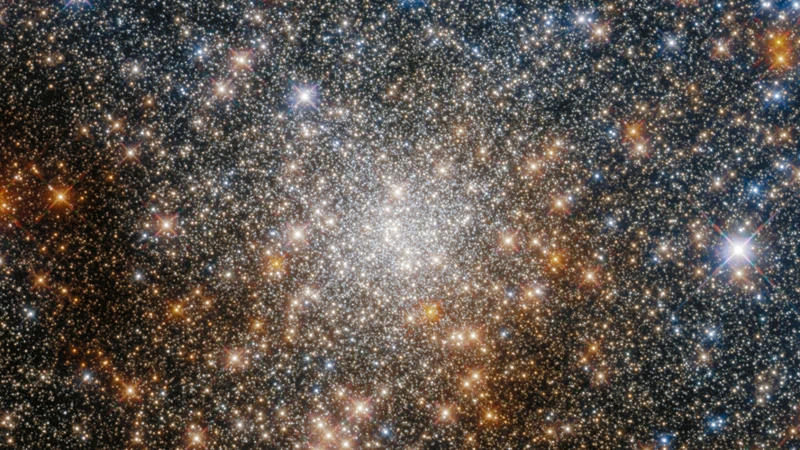
The advent of space telescopes has brought about a revolution in the field of exoplanet exploration. These advanced instruments have enhanced our understanding of distant worlds and have provided us with invaluable data for studying exoplanets. One notable space telescope that has made significant contributions is the Kepler Space Telescope, which operated from 2009 to 2018. The Kepler Space Telescope utilized the transit photometry technique to detect exoplanets by measuring the slight drops in brightness of stars when planets pass in front of them. This method allowed for the discovery of thousands of exoplanets, including those within the habitable zone of their host stars. Another space telescope that has played a pivotal role is the Hubble Space Telescope, known for its remarkable direct imaging capability. By capturing images of exoplanets, the Hubble Space Telescope has provided us with valuable insights into the atmospheric compositions and structures of these distant worlds. With their ability to collect precise data and image exoplanets, space telescopes have revolutionized exoplanet exploration and have propelled us closer to answering the age-old question of whether we are alone in the universe.
Kepler Space Telescope
The Kepler Space Telescope, named after the renowned astronomer Johannes Kepler, played a pivotal role in revolutionizing the field of exoplanet exploration. Launched by NASA in 2009, this space-based observatory was specifically designed to detect and characterize exoplanets using the transit method. The continuously monitored a specific region of the sky, specifically the Cygnus and Lyra constellations, measuring the brightness of over 150,000 stars simultaneously. By observing the slight dimming of a star’s light as a planet passes in front of it, known as a transit, the Kepler Space Telescope could infer the presence of an exoplanet and gather data about its size, orbit, and environment. Over the course of its mission, Kepler discovered thousands of exoplanets, ranging from Earth-sized rocky planets to gas giants larger than Jupiter. Some of its most notable discoveries include Kepler-452b, a planet similar in size to Earth and orbiting within the habitable zone of its star, and the Kepler-90 system, which boasts eight planets like our own solar system. The wealth of data gathered by the Kepler Space Telescope has significantly expanded our knowledge of exoplanets and their prevalence in the galaxy, paving the way for future explorations and the search for life beyond Earth.
Transit Photometry Technique
Transit photometry technique is a powerful method used by scientists to detect and study exoplanets. This technique relies on observing the dimming of a star’s brightness when a planet passes in front of it, causing a slight drop in the star’s luminosity. By monitoring these changes in brightness over time, astronomers can infer the presence and characteristics of an exoplanet. The transit photometry technique has played a pivotal role in the success of NASA’s Kepler Space Telescope in identifying thousands of exoplanets. The precision and sensitivity of this technique allow scientists to determine essential parameters of exoplanets, such as their size, orbital period, and distance from their host stars. Additionally, transit photometry can provide valuable insights into the exoplanet’s atmosphere by analyzing the composition of the stellar light passing through it during transit. It has also been instrumental in identifying exoplanets in the habitable zones of their host stars, where conditions might be suitable for the existence of liquid water, a crucial ingredient for life as we know it. The transit photometry technique has revolutionized our understanding of exoplanets and continues to be a fundamental tool in exoplanet exploration.
Hubble Space Telescope
The Hubble Space Telescope is one of the most iconic and revered instruments in the field of astronomy. Launched into low Earth orbit in 1990, the Hubble Space Telescope has revolutionized our understanding of the universe and has made significant contributions to exoplanet exploration. Here are some key highlights about the Hubble Space Telescope:
1. Observational Capabilities: The Hubble Space Telescope is equipped with a range of instruments that allow it to observe celestial objects across different wavelengths of light. This versatility enables scientists to study exoplanets in various ways, from analyzing their atmospheres to detecting signs of potential habitability.
2. Exoplanet Discoveries: The Hubble Space Telescope has been instrumental in discovering and characterizing exoplanets. By using the transit method, where the telescope observes a star to detect the dip in brightness caused by a planet passing in front of it, the Hubble has identified and studied numerous exoplanets in different regions of space.
3. Atmospheric Analysis: One of the key contributions of the Hubble Space Telescope to exoplanet exploration is its ability to analyze the atmospheres of distant planets. By studying the spectrum of light that passes through an exoplanet’s atmosphere during a transit, scientists can identify the presence of key gases, such as water vapor and methane, which provide valuable insight into a planet’s composition and potential habitability.
4. Astrophotography: The Hubble Space Telescope has captured some of the most breathtaking and awe-inspiring images of the cosmos. These stunning visuals not only serve as sources of inspiration but also provide valuable data and observations that contribute to our understanding of exoplanets and the universe as a whole.
It is important to note that the Hubble Space Telescope has had its limitations, such as its inability to directly image smaller exoplanets or obtain detailed atmospheric information. However, its contributions to exoplanet exploration have been immense, and it has paved the way for the development of future space telescopes with even greater capabilities.
Direct Imaging Capability
Space telescopes, such as the Hubble Space Telescope, have revolutionized exoplanet exploration through their direct imaging capability. This technique allows astronomers to capture actual images of exoplanets, providing valuable information about their size, composition, and even atmosphere. Direct imaging is particularly useful for studying larger exoplanets that are situated farther away from their host stars, as they generate more distinctive signals that can be detected. With the help of advanced instrumentation, space telescopes can block the overwhelming brightness of the host star, allowing the faint light emitted by the exoplanet to be captured and analyzed. By studying the light reflected from these distant worlds, scientists can gather clues about their atmospheric conditions and potential habitability. Direct imaging has been instrumental in the discovery and characterization of multiple exoplanets, including gas giants and some of the first rocky exoplanets. The insights gained from direct imaging observations contribute to our overall understanding of exoplanetary systems and aid in the search for Earth-like planets that may support life.
Current and Future Space Telescopes
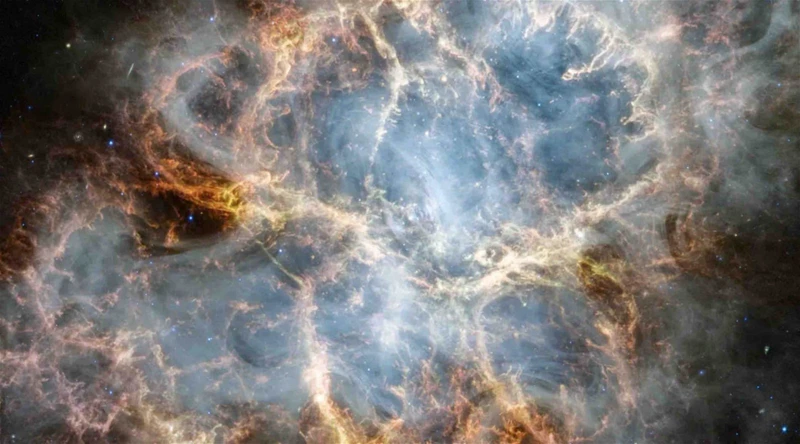
The field of exoplanet exploration has been revolutionized by the deployment of various space telescopes, both current and future. These powerful instruments play a vital role in capturing valuable data and expanding our understanding of the universe beyond our solar system. The James Webb Space Telescope (JWST) is one of the most highly anticipated space telescopes, set to be launched in 2021. It possesses advanced technologies that will allow us to investigate the atmospheres of exoplanets in greater detail and potentially detect signs of alien life. Another notable space telescope is the Tess Spacecraft, designed specifically for discovering exoplanets through the transit method, which involves observing the dimming of a star as a planet passes in front of it. Additionally, the PLATO Mission (Planetary Transits and Oscillations of Stars) is aimed at characterizing exoplanet systems, studying the properties of planets and their host stars. These current and future space telescopes hold the promise of uncovering even more astonishing discoveries, expanding our knowledge of the universe, and possibly answering the age-old question of whether we are alone in the cosmos.
James Webb Space Telescope
The James Webb Space Telescope (JWST) is an upcoming space telescope that is set to revolutionize our understanding of the universe, including the study of exoplanets. It is named after the NASA administrator James E. Webb, and is scheduled for launch in 2021. The JWST is designed to be the successor to the Hubble Space Telescope, and it will have a significantly larger mirror, enhancing its imaging capabilities and enabling scientists to observe celestial objects with unprecedented detail.
One of the key features of the JWST is its ability to observe in the infrared portion of the electromagnetic spectrum. This is essential for studying exoplanets because many of their characteristics, such as their atmospheres and surface temperatures, can be best analyzed in infrared light. The JWST’s instruments will be able to detect the thermal radiation emitted by exoplanets, providing valuable insights into their composition, climate, and potential habitability.
The JWST will have the ability to perform spectroscopic observations, which means it can analyze the light from exoplanets and break it down into its component wavelengths. This will allow scientists to identify the presence of certain molecules in the exoplanet’s atmosphere, such as water vapor, carbon dioxide, and methane, which are crucial in determining the potential for life as we know it.
The JWST’s large mirror, combined with its advanced instruments and infrared capabilities, makes it an indispensable tool in the study of exoplanets. It will enable scientists to conduct detailed observations of exoplanet atmospheres, study their compositions, and investigate the conditions that could support life. By providing a wealth of data and expanding our knowledge of exoplanets, the JWST will pave the way for future discoveries and contribute to our understanding of the origins and diversity of planets beyond our solar system.
Tess Spacecraft
The Transiting Exoplanet Survey Satellite, also known as TESS, is a space telescope designed and operated by NASA to search for exoplanets using the transit method. Launched in April 2018, TESS has been instrumental in expanding our knowledge of exoplanet systems. Unlike its predecessor, the Kepler Space Telescope, TESS covers a broader area of the sky, making it capable of observing a larger number of stars. TESS uses a set of four wide-angle telescopes to monitor sections of the sky known as “sectors.” Each sector spans approximately 24° by 96° and is observed for about 27 days. This extended monitoring period allows TESS to detect the slight dips in brightness caused by a planet transiting across its host star.
One of the advantages of TESS is its focus on nearby stars that are brighter than those typically observed by Kepler. This selection criteria makes these exoplanet candidates more accessible for detailed follow-up studies using ground-based observatories and future space telescopes like the James Webb Space Telescope. TESS has already made numerous exciting discoveries, including the detection of a potentially habitable super-Earth known as TOI 700 d, located in the habitable zone of its host star.
The data collected by TESS is made freely available to the public, allowing astronomers around the world to analyze the information and contribute to exoplanet research. This collaborative approach has led to the identification of a wide range of exoplanets, from small rocky worlds to massive gas giants. TESS continues to scan the sky, uncovering more secrets of the universe and paving the way for future space missions and telescopes. With its ability to survey vast regions of the sky and identify promising exoplanet candidates, TESS plays a crucial role in expanding our understanding of exoplanets and their diverse characteristics.
PLATO Mission
The PLATO (Planetary Transits and Oscillations of Stars) mission is an upcoming European Space Agency (ESA) project dedicated to studying exoplanets. It aims to monitor thousands of star systems simultaneously, with the primary goal of identifying and characterizing Earth-like planets. By focusing on the brighter and closer regions of our galaxy, PLATO will provide valuable data on the occurrence and properties of exoplanets within the habitable zone. The mission will use a combination of transits and astrometry techniques to detect exoplanets. PLATO will rely on a set of space telescopes equipped with multiple cameras, enabling it to observe a large number of stars continuously. These telescopes will be positioned at the Lagrange 2 (L2) point, approximately 1.5 million kilometers from Earth. The use of this strategic location will minimize orbital disturbances and ensure stable and uninterrupted observations. PLATO’s observational data will be complementary to other exoplanet missions, allowing scientists to gain a more comprehensive understanding of the exoplanet population and their properties. With its planned launch in the mid-2020s, the PLATO mission holds great promise for expanding our knowledge of exoplanets and the potential for habitability beyond our solar system.
Space Telescopes and the Search for Alien Life
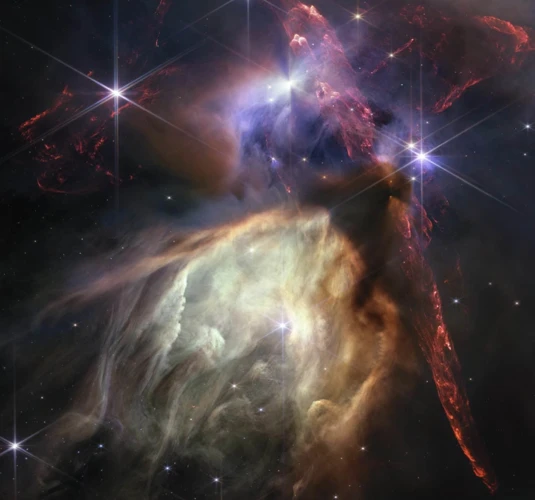
One of the most exciting aspects of exoplanet exploration is the search for alien life. The possibility of discovering life beyond Earth has captivated the minds of scientists and the general public alike. Space telescopes play a crucial role in this endeavor, allowing us to delve deeper into the mysteries of the universe and study exoplanets in unprecedented detail. These space telescopes are equipped with advanced instruments and detectors that can detect the faintest signals from distant worlds. One of the key objectives in the search for alien life is the detection of biosignatures, which are signs of life such as the presence of oxygen, methane, or other organic molecules in an exoplanet’s atmosphere. By analyzing the light passing through an exoplanet’s atmosphere, space telescopes can provide valuable insights into its composition and the potential for habitability. Additionally, these telescopes allow scientists to study the habitable zones around stars, which are regions where conditions may be suitable for life as we know it. With the exciting advancements in space telescope technology and data analysis techniques, we are one step closer to unraveling the mystery of whether we are alone in the universe.
Biosignature Detection
Biosignature detection is a crucial component of exoplanet exploration, as it involves the search for signs of life on these distant worlds. Scientists are particularly interested in identifying biosignatures, which are chemical or physical indicators that could be associated with biological activity. One key indicator scientists look for is the presence of organic molecules, such as methane and oxygen, which are often associated with life on Earth. The detection of these molecules in the atmosphere of an exoplanet could suggest the presence of living organisms. However, it is important to note that the presence of these molecules alone does not confirm the existence of life, as they could also be the result of abiotic processes.
In addition to organic molecules, biosignature detection involves the search for other potential indicators of life, such as the presence of certain gases in a planet’s atmosphere. For example, the simultaneous detection of methane, oxygen, and ozone in the atmosphere of an exoplanet could be a strong indication of the presence of life. This is because these gases have a tendency to react with each other and would quickly deplete if not replenished by some ongoing biological process.
To aid in the detection of biosignatures, space telescopes equipped with advanced spectroscopic instruments are utilized. These instruments allow scientists to analyze the composition of exoplanet atmospheres by measuring the absorption and emission of light at different wavelengths. By studying the spectral fingerprints of different molecules, researchers can identify potential biosignatures and gain insights into the potential habitability of exoplanets.
The upcoming James Webb Space Telescope, set to launch in 2021, is expected to greatly enhance our ability to detect biosignatures in the atmospheres of exoplanets. Its powerful instruments will enable detailed spectroscopic analysis and provide valuable data that could revolutionize our understanding of alien life.
While the detection of biosignatures remains a complex and challenging task, ongoing advancements in technology and the continued exploration of exoplanets bring us closer to answering the age-old question of whether life exists beyond Earth.
Characterization of Habitable Zones
The characterization of habitable zones is a critical aspect of exoplanet exploration. Habitable zones, also known as Goldilocks zones, refer to the range of distances from a star where conditions may be just right for the existence of liquid water on a planet’s surface. This concept is based on the idea that water is a key ingredient for life as we know it. However, the precise boundaries of habitable zones can vary depending on several factors such as the type and intensity of the star’s radiation, the planet’s atmosphere, and its composition. To properly characterize habitable zones, scientists rely on space telescopes to observe and analyze multiple parameters. These parameters include the planet’s proximity to its star, the star’s luminosity, the presence of any atmospheric gases that could contribute to a greenhouse effect, and the composition and thickness of the planet’s atmosphere. By studying these factors, scientists can estimate the potential habitability of exoplanets and identify those that may be suitable environments for the existence of liquid water and potentially even life. The role of space telescopes in the characterization of habitable zones is invaluable, as they enable us to collect data and make precise measurements that contribute to our understanding of the potential habitability of exoplanets. As future space telescopes, such as the upcoming James Webb Space Telescope, continue to push the boundaries of exoplanet exploration, we can anticipate further advancements in our ability to characterize habitable zones and unravel the mysteries of potential life beyond Earth.
The Role of Data Analysis in Exoplanet Discoveries
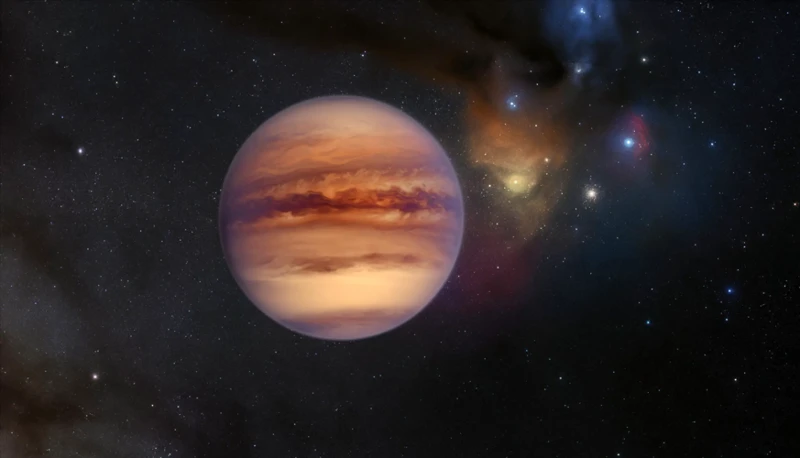
The Role of Data Analysis in Exoplanet Discoveries:
Data analysis plays a pivotal role in unlocking the mysteries of exoplanets and extracting meaningful information from the vast amounts of data collected by space telescopes. With the advancements in technology and the increasing precision of observations, the volume of data being gathered has grown exponentially. However, this rich trove of information is often complex and requires sophisticated algorithms and techniques to extract key insights.
Data analysis in exoplanet discoveries involves several crucial steps. First, scientists collect raw data from space telescopes like the Kepler Space Telescope or the Hubble Space Telescope. This data includes measurements of the brightness of stars, transit light curves, spectroscopic data, and more.
Next, researchers employ statistical methods and machine learning algorithms to analyze the data and identify potential exoplanet candidates. They look for patterns in the brightness of stars, such as recurring dips that indicate exoplanets passing in front of their host star. This process, known as transit photometry, helps identify exoplanets through the detection of regular variations in a star’s light output.
Once potential exoplanets are identified, scientists conduct further analyses to confirm their existence and gather additional information. They calculate important characteristics like the planet’s size, orbital period, and distance from its host star. These parameters help in categorizing the exoplanet and determining its potential habitability.
Data analysis plays a crucial role in understanding exoplanet atmospheres. By examining the light passing through the exoplanet’s atmosphere during a transit event, scientists can infer the chemical composition and identify any significant atmospheric features. This analysis reveals crucial information about the planet’s potential habitability and the existence of key elements that are essential for life.
The complexity and scale of data analysis in exoplanet discoveries require a multidisciplinary approach, incorporating expertise from astrophysics, statistics, computer science, and more. Scientists continuously develop and refine algorithms to improve the accuracy and efficiency of data analysis methods.
The role of data analysis in exoplanet discoveries cannot be overstated. It enables scientists to sift through vast amounts of data, identify potential exoplanet candidates, confirm their existence, and gain insights into their characteristics. By leveraging advanced statistical techniques and machine learning algorithms, we are uncovering the secrets of distant worlds and expanding our understanding of the universe and the potential for life beyond our own planet.
Conclusion

In conclusion, the role of space telescopes in exoplanet exploration cannot be overstated. These remarkable instruments have revolutionized our understanding of the universe and our place within it. Through their advanced capabilities, such as the transit photometry technique employed by the Kepler Space Telescope and the direct imaging capability of the Hubble Space Telescope, we have made groundbreaking discoveries and expanded our knowledge of exoplanets. The future holds even greater promise with upcoming missions like the James Webb Space Telescope, TESS spacecraft, and PLATO mission, which will further enhance our ability to study and characterize exoplanets. Space telescopes have not only enabled us to detect and understand the properties of these distant worlds, but they also play a crucial role in the search for extraterrestrial life by helping us identify biosignatures and characterize habitable zones. However, the quest for knowledge about exoplanets is far from over, and data analysis will continue to be a key component in making new discoveries. As technology advances and our understanding deepens, space telescopes will remain our allies in unraveling the mysteries of exoplanet exploration and shedding light on the possibility of life beyond our own planet. The future of space exploration is indeed exciting, and we can look forward to many more incredible discoveries to come.
Frequently Asked Questions

What are exoplanets?
Exoplanets are planets that orbit stars outside of our solar system. They are also referred to as extrasolar planets.
How are exoplanets detected?
Exoplanets can be detected through various methods including the transit method, radial velocity method, direct imaging, and gravitational microlensing.
What is the significance of exoplanet exploration?
Exoplanet exploration allows us to understand the diversity of planetary systems beyond our own, giving us insights into planetary formation, habitability, and the existence of life beyond Earth.
What are the challenges in exoplanet exploration?
Some challenges in exoplanet exploration include data limitations, atmospheric characterization complexities, and the search for subtle signs of life known as biosignatures.
How have space telescopes revolutionized exoplanet exploration?
Space telescopes have revolutionized exoplanet exploration by providing us with high-quality observations, allowing us to detect and study exoplanets in unprecedented detail.
What is the Kepler Space Telescope?
The Kepler Space Telescope was a NASA mission dedicated to finding exoplanets using the transit method. It greatly contributed to the discovery of thousands of exoplanets.
What is the transit photometry technique?
The transit photometry technique involves observing slight dips in a star’s brightness when an exoplanet passes in front of it. This method helps detect the presence of exoplanets.
What is the Hubble Space Telescope known for in exoplanet exploration?
The Hubble Space Telescope has been instrumental in studying exoplanet atmospheres, providing valuable data about their composition, temperature, and potential habitability.
What is the James Webb Space Telescope?
The James Webb Space Telescope is NASA’s upcoming flagship space telescope. It is designed to observe the universe across a broad range of wavelengths and will greatly contribute to exoplanet research.
What is the role of data analysis in exoplanet discoveries?
Data analysis plays a crucial role in exoplanet discoveries as it helps scientists identify patterns, interpret observations, and detect the subtle signals that indicate the presence of exoplanets.
References
- The Space Telescope That Could Find a Second Earth
- The role of space exploration in discovering new planets …
Frequently Asked Questions

1. How are exoplanets defined?
Exoplanets are defined as planets that orbit around stars outside of our solar system. They are also known as extrasolar planets.
2. Why is the exploration of exoplanets significant?
Exploring exoplanets is significant because it helps us understand the diversity of planetary systems beyond our own and provides insights into the potential for habitable environments and the existence of life elsewhere in the universe.
3. What are the challenges in exoplanet exploration?
Exoplanet exploration faces challenges such as limited data availability due to the vast distances involved, as well as difficulties in characterizing the atmospheres of these distant worlds.
4. How have space telescopes revolutionized exoplanet exploration?
Space telescopes such as the Kepler Space Telescope and the Hubble Space Telescope have revolutionized exoplanet exploration by enabling the detection and study of exoplanets through techniques like transit photometry and direct imaging.
5. What is the transit photometry technique?
The transit photometry technique involves observing the slight dimming of a star’s light when an exoplanet passes in front of it. By measuring these repeated dimming events, scientists can determine the presence and characteristics of exoplanets.
6. What is the role of the James Webb Space Telescope in exoplanet exploration?
The James Webb Space Telescope, set to launch in 2021, will play a crucial role in exoplanet exploration by studying the atmospheres of exoplanets and looking for signs of habitability or the presence of life through the detection of biosignatures.
7. What is the role of data analysis in exoplanet discoveries?
Data analysis is critical in exoplanet discoveries as it involves processing and interpreting the vast amount of data collected by space telescopes. It helps identify potential exoplanets, characterize their properties, and understand their significance in the context of planetary science.
8. How does the TESS spacecraft contribute to exoplanet exploration?
The TESS spacecraft is designed to survey the entire sky and identify thousands of exoplanets using the transit photometry technique. It focuses on discovering exoplanets orbiting bright, nearby stars, making them ideal targets for further study.
9. What is the significance of biosignature detection in exoplanet exploration?
Biosignature detection involves searching for signs of life or indicators of habitability on exoplanets. Identifying biosignatures can provide strong evidence for the existence of life beyond Earth and expand our understanding of the conditions necessary for life to thrive.
10. How do space telescopes contribute to the characterization of habitable zones?
Space telescopes contribute to the characterization of habitable zones by studying the atmospheres of exoplanets and determining whether they fall within the range of conditions suitable for liquid water to exist, a key factor for the potential habitability of a planet.
References
- European space telescope to launch new era of exoplanet …
- Missions | Discovery – Exoplanet Exploration: Planets Beyond …
- James Webb Space Telescope discovers its first exoplanet







